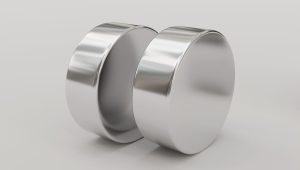It’s well known that during the solar eclipse, without protective gear the sun can damage your eyes permanently. However, your cellphone camera might also be at risk.
According to NASA, the phone sensor could be at a high risk of damage like any other image sensor if pointed directly at the sun.
“You would need to utilize the proper filters just like on any other camera,” the Aeronautics and Space agency said in a post on X, formerly Twitter. “The best practice would be to hold a pair of eclipse glasses in front of your phone’s lenses when photographing the sun at any point other than totality.”
To avoid any damage to your smartphone camera, you will need to purchase an ISO-certified filter, ISO 12312-2. While it’s not recommended to directly observe a solar eclipse through your phone’s camera or screen without proper filters or equipment, you can certainly use your phone to indirectly view or capture the eclipse safely.
Here are some ways you can use your phone during a solar eclipse:
Livestreams
Many organizations, observatories, and news outlets provide livestreams of solar eclipses online. You can watch these livestreams on your phone to experience the eclipse safely.
Pinhole projection
Create a simple pinhole projector using your phone and a piece of cardboard or paper. Poke a small hole in the center of the cardboard and hold it between the sun and a flat surface, such as the ground or another piece of paper. The sunlight passing through the pinhole will project an image of the partially eclipsed sun onto the surface, which you can observe safely.
Solar eclipse apps
There are numerous mobile apps available that provide information about solar eclipses, including timing, location, and simulations. These apps can enhance your understanding and enjoyment of the event while keeping you informed about safety precautions
How to take a picture of a solar eclipse with your phone
Here are some tips by NASA for taking pictures of a total solar eclipse.
- To take images when the sun is partially eclipsed, you’ll need to use a special solar filter to protect your camera. However, at totality, when the moon completely blocks the sun, make sure to remove the filter so you can see the sun’s outer atmosphere – the corona.
- If you don’t have a telephoto zoom lens, focus on taking landscape shots and capture the changing environment. Using a tripod can help you stabilize the camera and avoid taking blurry images when there is low lighting. Additionally, using a delayed shutter release timer will allow you to snap shots without jiggling the camera.
- Anywhere you can point your camera can yield exceptional imagery, so be sure to compose some wide-angle photos that can capture your eclipse experience.
- NASA photographer Bill Ingalls recommends focusing on the human experience of watching the eclipse. “The real pictures are going to be of the people around you pointing, gawking, and watching it,” Ingalls noted. “Those are going to be some great moments to capture to show the emotion of the whole thing.”




